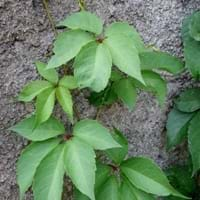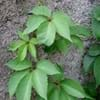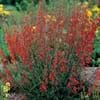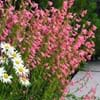Life Span
Perennial
Perennial
Origin
Central North America, Eastern Mexico, Eastern North America, Eastern United States, Southeastern Canada
World, Pandemic, North America, Europe, Africa, Asia
Types
Not Available
Alizes
Bumblebee Deelite
Maui Moonlight
Langport Wren
Sarah Taylor
Titan's Glory
Thornbird
Jane Phillips
Orinoco Flow
Number of Varieties
Not Available
Habitat
Brushlands, Chaparral, open Woodlands, Riverbanks, shaded woods, Stream side
gardens, Hillside, Riverbanks, Warmer regions, Wet forest
USDA Hardiness Zone
7-8
Not Available
AHS Heat Zone
Not Available
-9999
Sunset Zone
Not Available
Not Available
Habit
Spreading
Clump-Forming
Minimum Height
Not Available
Minimum Width
Not Available
Flower Color
Not Available
White, Yellow, Blue, Purple, Orange, Pink, Rose, Coral, Peach, Burgundy, Lavender, Plum, Orange Red, Dark Salmon, Bronze, Chocolate, Black
Flower Color Modifier
Bicolor
Bicolor
Fruit Color
Black, Blue
Not Available
Leaf Color in Spring
Green, Purplish Green
Not Available
Leaf Color in Summer
Gray Green
Not Available
Leaf Color in Fall
Blue Green
Not Available
Leaf Color in Winter
Gray Green
Light Green
Leaf Shape
Palmate
Long Linear
Plant Season
Late Summer
Not Available
Sunlight
Full Shade, Partial shade, Partial Sun
Full Sun, Partial Sun
Type of Soil
Loam, Sandy
Clay, Loam, Sand
The pH of Soil
Neutral, Slightly Acidic, Slightly Alkaline
Acidic, Neutral, Alkaline
Soil Drainage
Well drained
Well drained
Bloom Time
Late Summer, Summer
Not Available
Tolerances
Drought
Drought
Where to Plant?
Ground
Ground, Pot
How to Plant?
Seedlings
From Rhizomes, Stem Planting
Plant Maintenance
Low
Medium
Watering Requirements
Needs less watering
Does not require lot of watering, Keep ground moist, Water when soil is dry
In Summer
Moderate
Lots of watering
In Spring
Moderate
Moderate
In Winter
Ample Water
Average Water
Soil pH
Neutral, Slightly Acidic, Slightly Alkaline
Acidic, Neutral, Alkaline
Soil Type
Loamy, Moist, Sandy
Clay, Loam, Sand
Soil Drainage Capacity
Well drained
Well drained
Sun Exposure
Full Shade, Partial shade, Partial Sun
Full Sun, Partial Sun
Pruning
Prune after flowering, Prune for shortening long shoots, Prune in late summer or fall
Remove dead leaves, Remove dead or diseased plant parts, Requires very little pruning
Fertilizers
Fertilize every year
All-Purpose Liquid Fertilizer
Pests and Diseases
Aphids, Black Vine Weevil, Caterpillars, Flea Beetles, Leaf eating pests, Leaf Hoppers, Scale
Bacterial Diseases, Fungal Diseases, Viruses
Plant Tolerance
Drought
Drought
Flower Petal Number
Single
Single
Foliage Texture
Fine
Medium
Foliage Sheen
Matte
Matte
Attracts
Birds
Bees, Butterflies
Allergy
Abdominal pain, Bloody vomiting, Diarrhea, dilation of pupils, drowsiness, Headache, Nausea, Skin irritation, Sweating, Toxic, Twitching of face, Weak pulse
Asthma
Aesthetic Uses
Showy Purposes, Used for decorating walls, fences, gates, hedges, etc.
Beautification, Showy Purposes
Beauty Benefits
No Beauty Benefits
Not Available
Environmental Uses
Air purification, Food for animals, Food for birds
Air purification
Medicinal Uses
Antirheumatic, Cough, Diarrhea, Expectorant
No Medicinal Use
Part of Plant Used
Bark, Fruits, Root, Sap
Flowers, Leaves, Rhizomes, Root
Other Uses
Used as Ornamental plant, Used in herbal medicines
Making Perfumes, Oil is used for aromatherapy, Used as a sedative, Used as essential oil
Used As Indoor Plant
No
No
Used As Outdoor Plant
Yes
Yes
Garden Design
Vine, Wall
Bedding Plant, Cutflower, Mixed Border, Rock Garden, Wall
Botanical Name
Parthenocissus quinquefolia
IRIS
Common Name
Virginia creeper, Victoria creeper, five-leaved ivy, or five-finger
Iris
In Hindi
वर्जीनिया लता
Iris
In German
Selbstkletternde Jungfernrebe, Wilder Wein
Iris
In French
vigne vierge vraie, vigne vierge à cinq folioles, vigne vierge de Virginie
Iris
In Spanish
Parra Virgen, Viña virgen y Enredadera de Virginia
Iris
In Greek
αναρριχητικό φυτό της Βιρτζίνια
Ίρις
In Portuguese
Virginia Creeper
Íris
In Polish
winobluszcz
Irys
In Latin
Virginia creeper
Iris
Phylum
Magnoliophyta
Tracheophyta
Class
Magnoliopsida
Liliopsida
Order
Rhamnales
Asparagales
Family
Vitaceae
Iridaceae
Genus
Parthenocissus
Iris
Clade
Angiosperms, Eudicots, Rosids
Angiosperms, Monocots
Tribe
Not Available
Irideae
Subfamily
Not Available
Iridoideae
Number of Species
Not Available
Importance of Virginia Creeper and Iris
Want to have the most appropriate plant for your garden? You might want to know the importance of Virginia Creeper and Iris. Basically, these two plants vary in many aspects. Compare Virginia Creeper and Iris as they differ in many characteristics such as their life, care, benefits, facts, etc. Every gardener must at least have the slightest clue about the plants he wants to plant in his garden. Compare their benefits, which differ in many ways like facts and uses. The medicinal use of Virginia Creeper is Antirheumatic, Cough, Diarrhea and Expectorant whereas of Iris is No Medicinal Use. Virginia Creeper has beauty benefits as follows: No Beauty Benefits while Iris has beauty benefits as follows: No Beauty Benefits.
Compare Facts of Virginia Creeper vs Iris
How to choose the best garden plant for your garden depending upon its facts? Here garden plant comparison will help you to solve this query. Compare the facts of Virginia Creeper vs Iris and know which one to choose. As garden plants have benefits and other uses, allergy is also a major drawback of plants for some people. Allergic reactions of Virginia Creeper are Abdominal pain, Bloody vomiting, Diarrhea, dilation of pupils, drowsiness, Headache, Nausea, Skin irritation, Sweating, Toxic, Twitching of face and Weak pulse whereas of Iris have Asthma respectively. Having a fruit bearing plant in your garden can be a plus point of your garden. Virginia Creeper has no showy fruits and Iris has no showy fruits. Also Virginia Creeper is flowering and Iris is flowering. You can compare Virginia Creeper and Iris facts and facts of other plants too.





